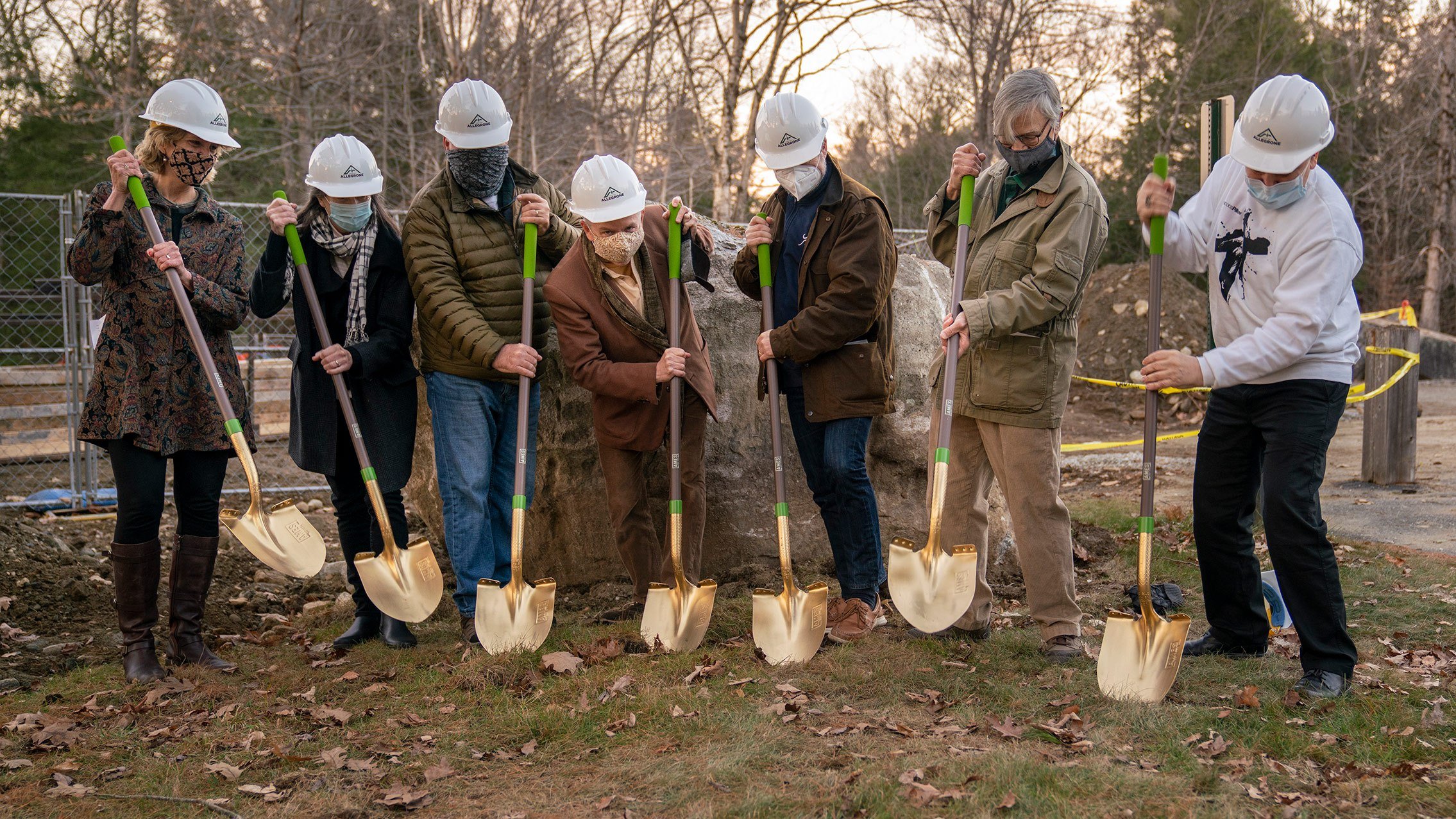
Since 1996, Blake’s Barn has served as the home of the Archives, where visitors to campus can explore the history of Jacob’s Pillow and the artists who have contributed to its legacy.
This winter, Jacob’s Pillow laid the foundation for a new addition to this 18th-century building, in collaboration with Jones Whitsett Architects and Allegrone Construction. The groundbreaking was held at Blake’s Barn on November 20, 2020—just three days after the Doris Duke Theatre was consumed by fire.
Although that loss was immense, said Executive & Artistic Director Pamela Tatge, she pointed out that all of the theater’s activities were recorded on video and are preserved in perpetuity in the Jacob’s Pillow Archives, giving the current expansion a special sense of relevance.
Construction will continue through April, and the Pillow expects to welcome visitors into the expanded Blake’s Barn in summer 2021.
Breaking Ground
The afternoon of November 20 was overcast but warm, and the small group that gathered outside Blake’s Barn wore light jackets and face masks. While in-person attendance at the groundbreaking was limited in order to comply with COVID-19 state guidelines, a larger group of invitees had formed online to watch the ceremony via a livestream on Zoom.
“We have had quite a week,” said Tatge, who spoke from a microphone placed in front of a chainlink fence that surrounded the construction site on the east side of Blake’s Barn. Roughly 300 feet further down the gravel path, one charred, free-standing wall cast a shadow over a large plot of wreckage, marking the total loss of the Doris Duke Theatre.
“A ceremony that celebrates renewal has deeper meaning now,” said Tatge, quoting Jacob’s Pillow Trustee Sandra Burton. “We lost an important, iconic building on Tuesday … After it happened, we began a list of all that we were grateful for. Grateful that no one got hurt, grateful that no other building on this campus was touched. And then we thought: ‘Thank goodness every performance, every talk, every workshop, every creative residency showing was captured, and it’s stored right here in the Archives.'”
Much of the material held in on-site collections at the Archives is also available to the world through the Pillow’s online platforms, Tatge added, particularly through Jacob’s Pillow Dance Interactive. Since spring 2020, that website has seen a 61% increase in visits, with 320,000 people visiting between March and October alone. “That kind of engagement is why we must continue to sustain our Archives, and we must expand them,” she said.
Looking Back to Look Forward
In 2020, Director of Preservation Norton Owen marked his 45th season on staff at Jacob’s Pillow. Owen worked in several roles at Jacob’s Pillow before taking on his current title in 1990—the same year that the organization inaugurated the Doris Duke Theatre.
Speaking at the microphone, Owen recalled the 1996 dedication of Blake’s Barn as the official home of the Archives. On that day in 1996, he recalled, longtime Pillow friend and Board Emerita Marge Champion remarked that “young artists don’t have enough spaces where they can be in touch with history … I celebrate the living part of this barn, which I know is going to flower and to grow and to inspire.”
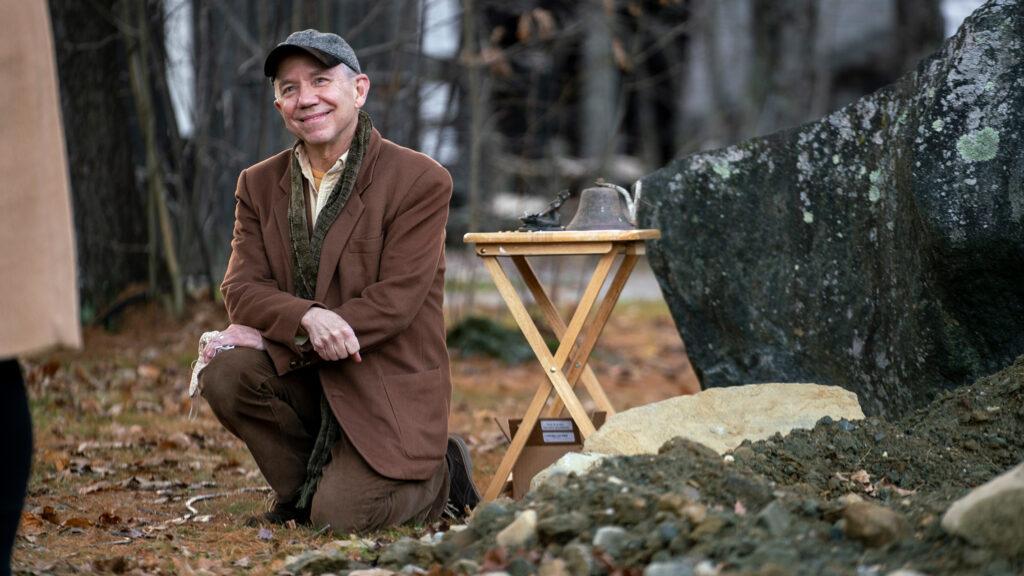
Champion, a dancer and choreographer with a storied career in Hollywood musicals, Broadway productions, and on television, donated the building that became Blake’s Barn to Jacob’s Pillow. The building is named in memory of her son Blake. She died on October 21, 2020 at the age of 101.
Now, said Owen, “we are at this juncture … one that she could see 24 years ago, and we are able to move on. All I can say about what has happened this week is just to acknowledge the poetry of it … the fact that we are affirming both our past and our future here, at the same time when we’ve lost so much.”
Margo Jones of Jones Whitsett Architects—who previously collaborated with the Pillow on design and renovation projects encompassing the Ted Shawn Theatre, Doris Duke Theatre, and the opening of Blake’s Barn—also spoke publicly. “To be there at the beginning and see this framework become such an important archive, it’s an honor to be associated with it,” Jones said. She added that the addition to Blake’s Barn is designed in a farmhouse vernacular style, “meant to be quite humble, a backdrop to the amazing activities that go on and will go on in every square inch of the space that we’re adding … We look forward to seeing the addition serve the Pillow and the world for many generations to come.”
Lead donor Stephan Driscoll spoke as well, offering a few poignant memories. Driscoll attended The School at Jacob’s Pillow in 1976, and served as the Festival’s resident photographer for a decade. “I had no idea that my connection here would follow me through the rest of my life,” he said, recalling one day during that period when he and several others discovered boxes of photos stored in a tool shed behind the Ted Shawn Theatre. Salvaged trunks of costumes were in similar need of a permanent home, he said. “And so, here we are today.”
A self-professed avid collector, Driscoll expressed enthusiasm for “this marvelous addition going up to preserve and show all of the wonderful costumes, photos, letters, and ephemera. And I keep finding things too … There is still stuff out there. Keep your eyes out.”
This expansion project is made possible in collaboration with Jones Whitsett Architects and Allegrone Construction, with very special thanks to the generous contributions of Stephan Driscoll, Richard Philp, and MaryAnn and Scott Goodell.
To learn more about the history of Blake’s Barn, click here to view the information card distributed at the groundbreaking on November 20, 2020.
Written by Hunter Styles. Published January 2021.
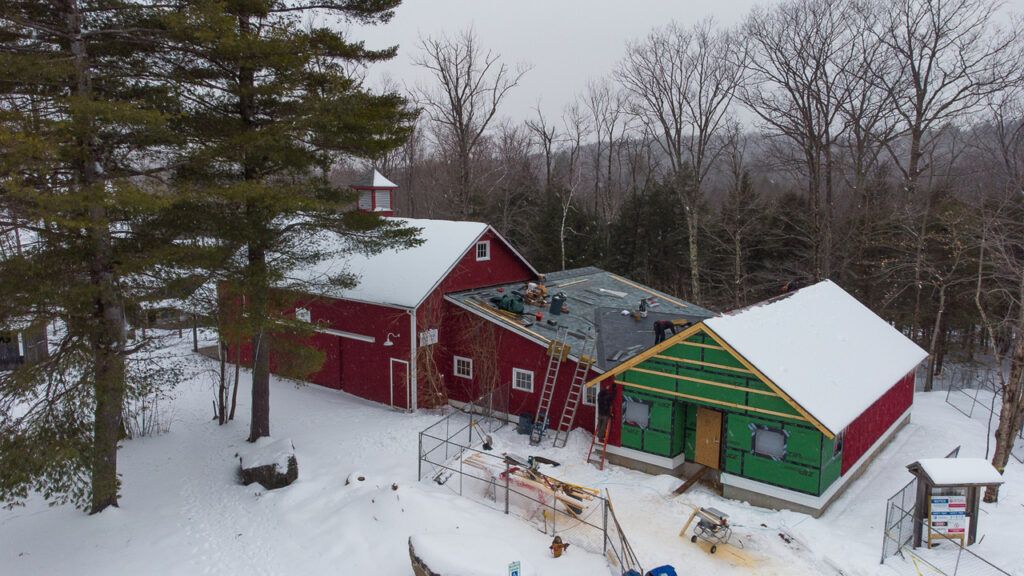
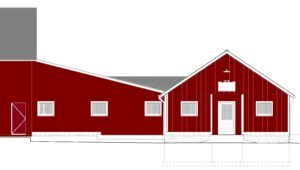
Learn about the Archives
The Jacob’s Pillow Archives document the history of Jacob’s Pillow and the artists who have contributed to its legacy. The collections include audiotapes, board minutes, books, correspondence, costumes, films, photographs, posters, programs, scrapbooks, videos, and more.
Explore Dance Interactive
Immerse yourself in a growing collection of multimedia essays, games, podcasts, and dance videos filmed at Jacob's Pillow from the 1930s to today.
